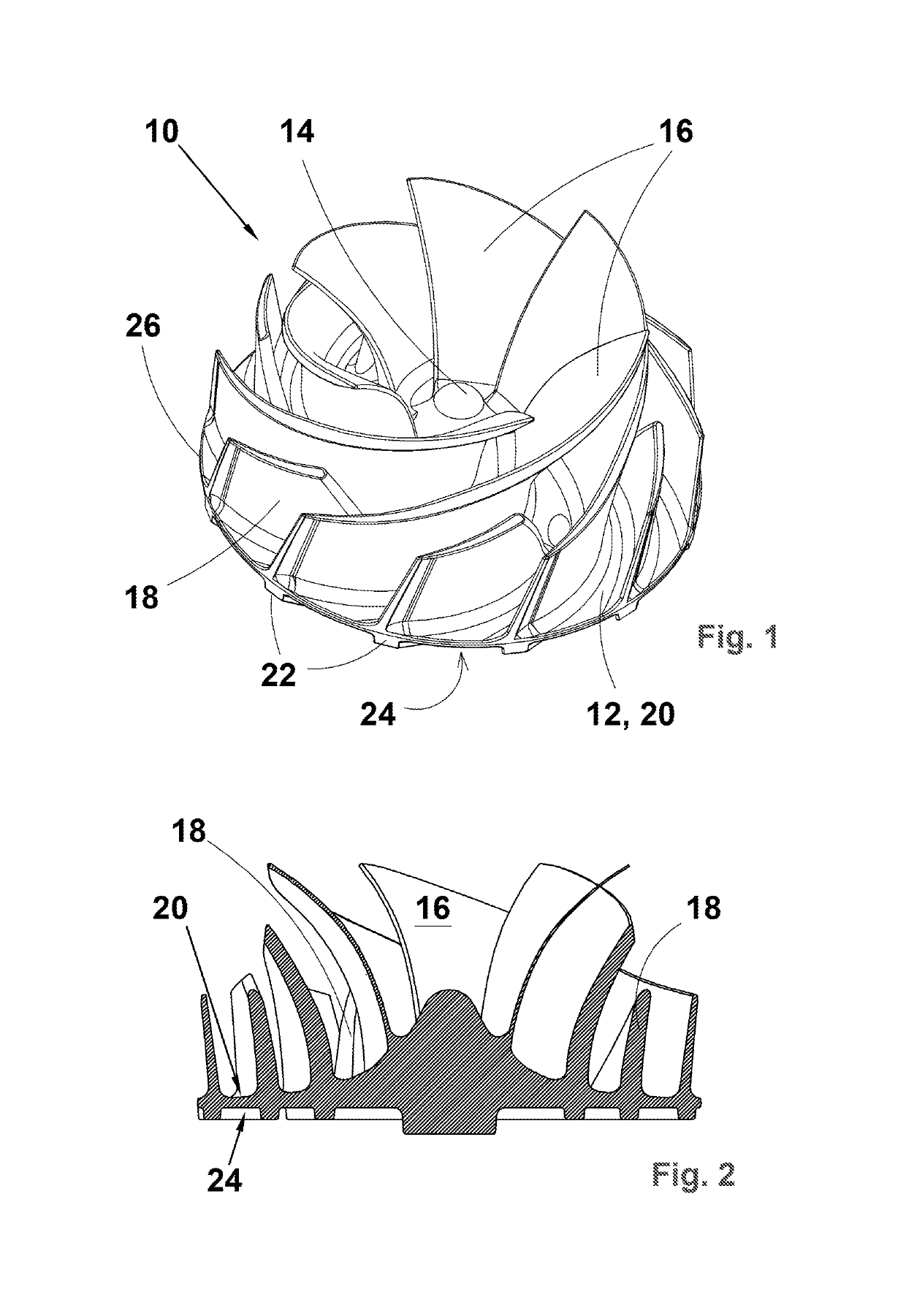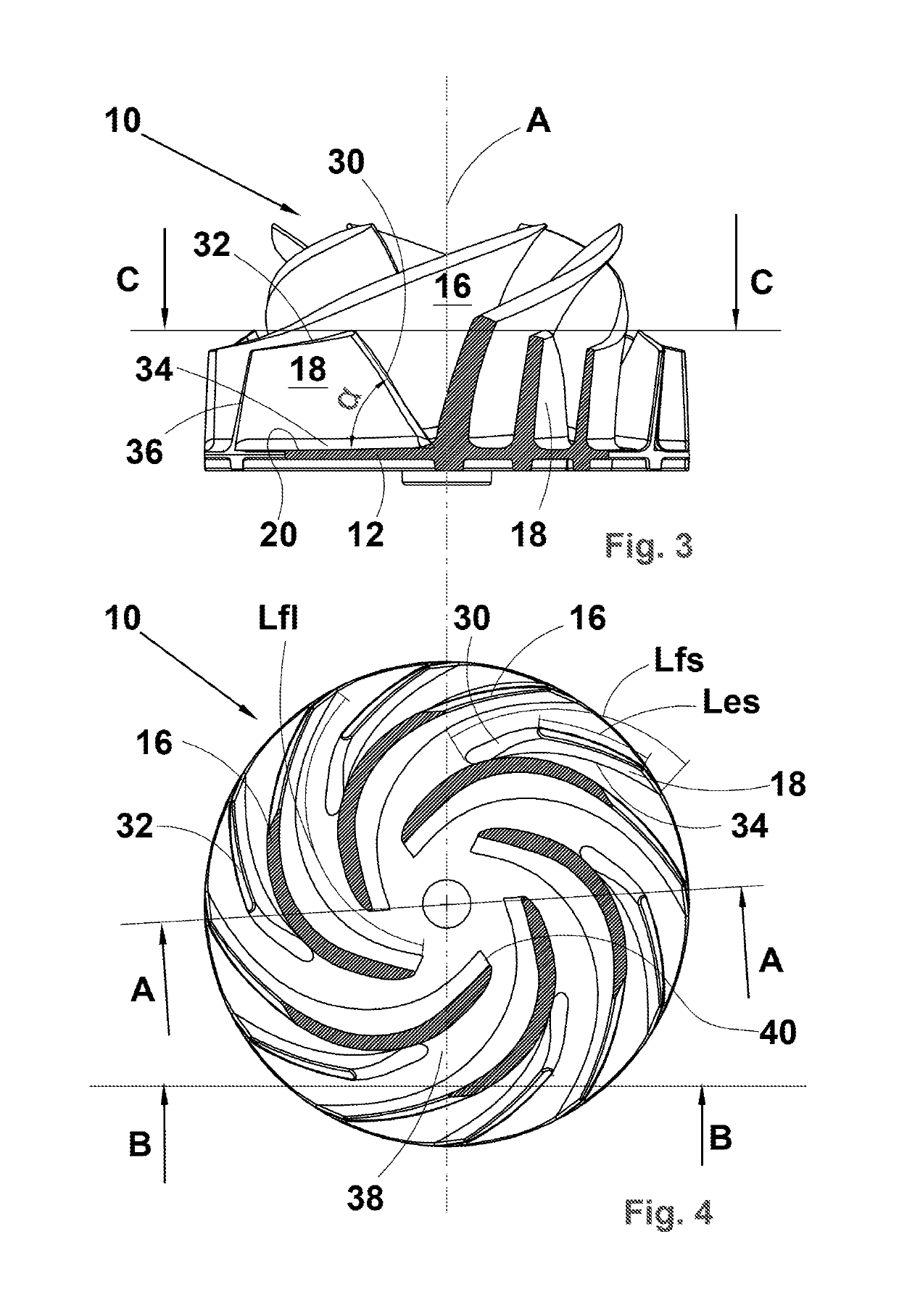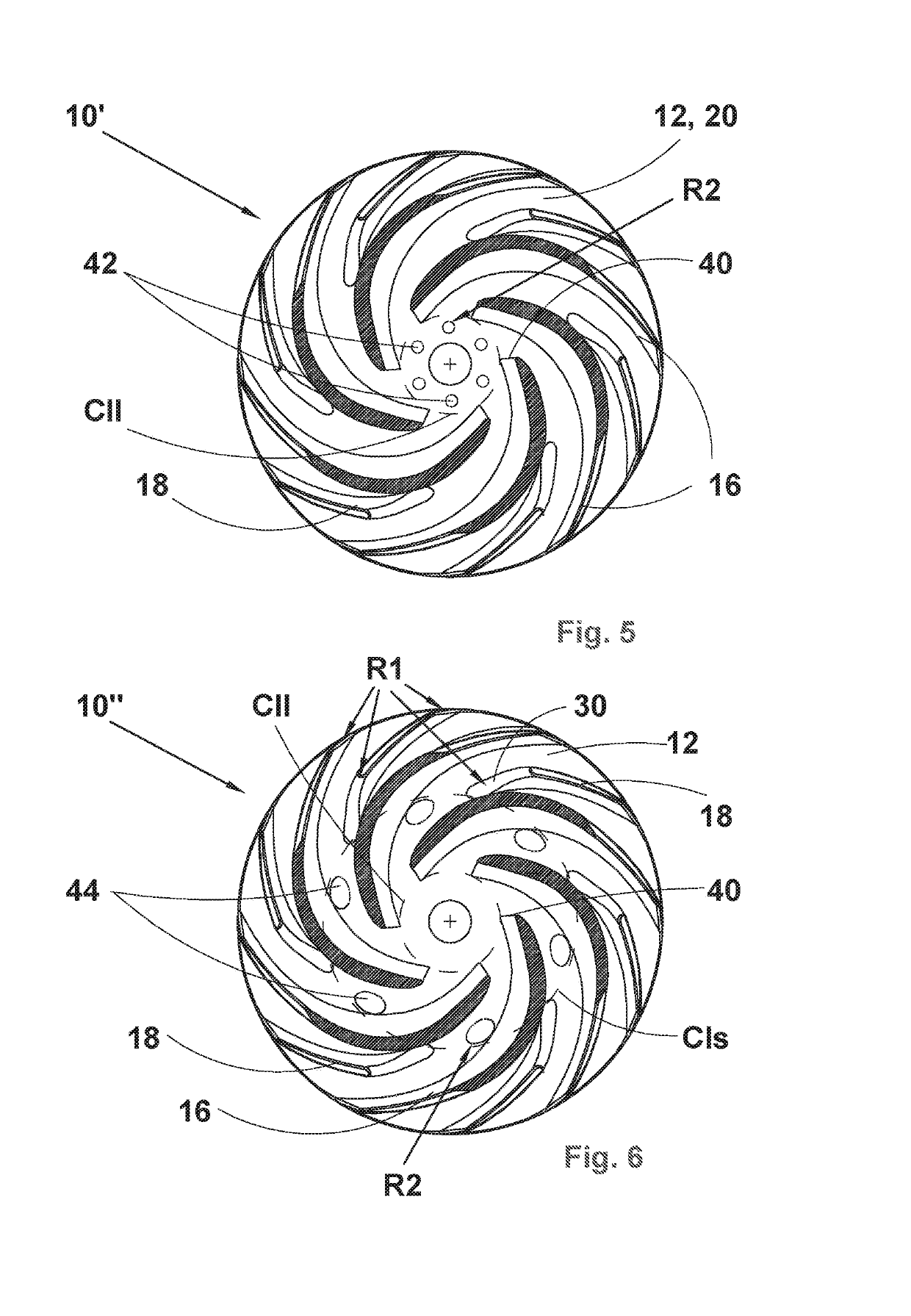Impeller for a centrifugal headbox feed pump
a centrifugal pump and feed pump technology, applied in the direction of pump components, radial flow pumps, fluid engines, etc., can solve the problems of increasing the rate of fibrous web machines, increasing the volume flow of dilute suspensions introduced to fibrous web machines, and in practice, nowadays, reducing distance rather than increasing, so as to reduce the size of the pump and reduce the required suction head. , the effect of reducing energy consumption
- Summary
- Abstract
- Description
- Claims
- Application Information
AI Technical Summary
Benefits of technology
Problems solved by technology
Method used
Image
Examples
Embodiment Construction
[0043]FIG. 1 illustrates a perspective view and FIG. 2 a cross-sectional view along line A-A of FIG. 4 of the impeller in accordance with a preferred embodiment of the present invention. The impeller 10 is a semi-open impeller having a rear plate or shroud 12 with a hub 14 and longer working vanes 16 and at least one intermediate or shorter working vane 18 in each vane passage between the longer working vanes 16 at the front side of the shroud 12, i.e. at the face 20 of the shroud 12 facing the pump inlet (not shown). The shroud 12 preferably, but not necessarily includes rear vanes 22 at the rear face 24 of the shroud 12. In a further variation of the present invention the rear face 24 includes as many rear vanes 22 as there are working vanes 16 and 18 on the front face 20 of the shroud, the rear vanes 22 being positioned opposite the working vanes 16 and 18 and having, preferably but not necessarily, the same length as the working vanes 16 and 18. The shroud 12 has an outer circum...
PUM
 Login to View More
Login to View More Abstract
Description
Claims
Application Information
 Login to View More
Login to View More - R&D
- Intellectual Property
- Life Sciences
- Materials
- Tech Scout
- Unparalleled Data Quality
- Higher Quality Content
- 60% Fewer Hallucinations
Browse by: Latest US Patents, China's latest patents, Technical Efficacy Thesaurus, Application Domain, Technology Topic, Popular Technical Reports.
© 2025 PatSnap. All rights reserved.Legal|Privacy policy|Modern Slavery Act Transparency Statement|Sitemap|About US| Contact US: help@patsnap.com



